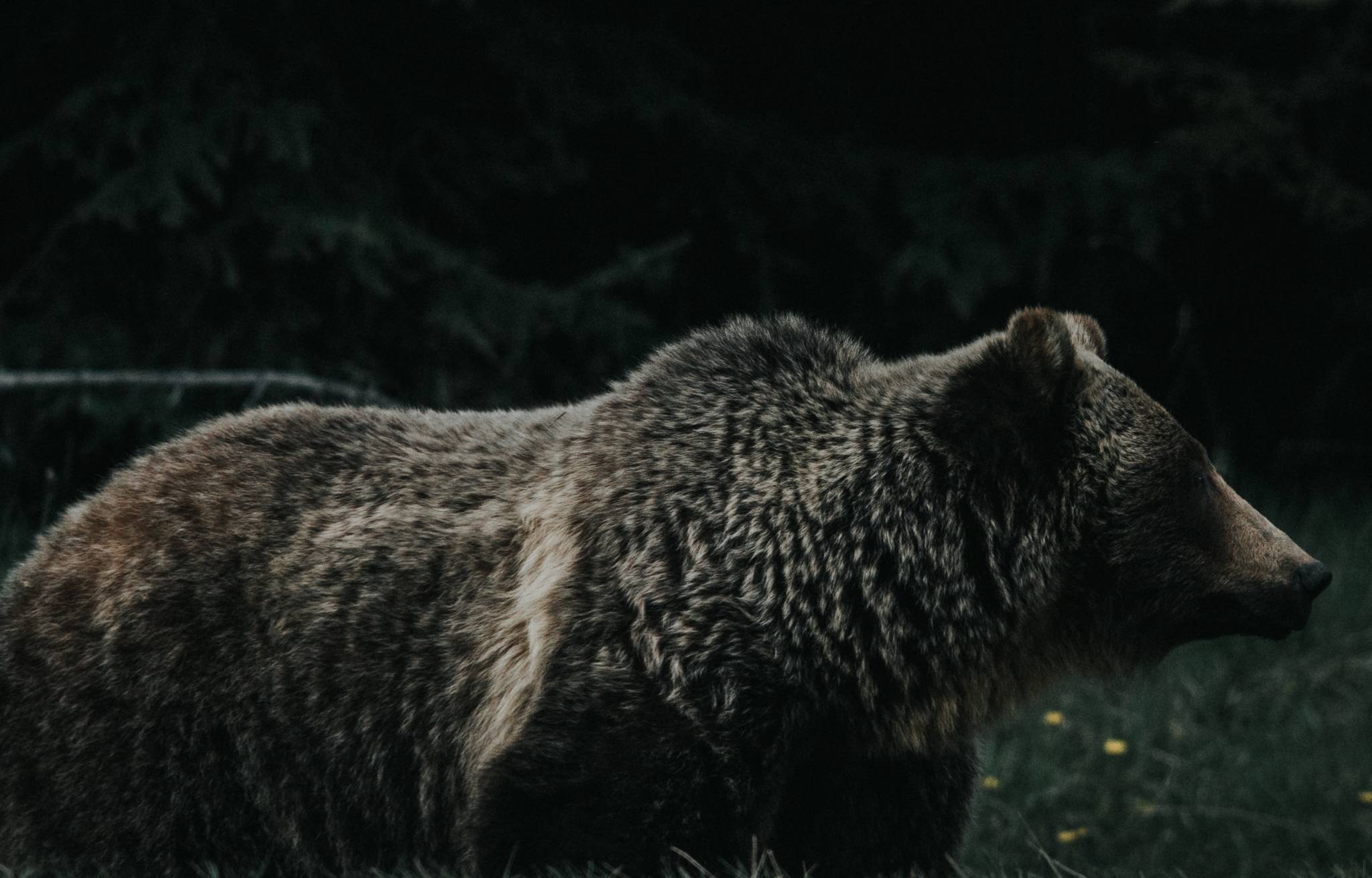The people of Southeast Alaska are fortunate to experience glimpses and encounters with bears in our yards and along the trails. All of these encounters bring awe, wonder, excitement and sometimes fear. These are exactly the same feelings that humankind has experienced about bears since primeval times.
The observation of bears along with these feelings evolved into a belief that these hairy cousins were sacred and holy and to be respected in very special ways.
A unique connection between humans and bears was experienced and continues to this day as we retell folk tales. Legends and myths and cuddle stuffed bears. We use many hundreds of words in English that derive from “bear” in several language families. Many people choose the bear as a personalized “spirit animal,” striving to imbue the bear’s many characteristics into their own lives.
Bears are the only large omnivores, always curious about their environment and searching for food, just as people hunted and foraged. Watching them explore their environment, we sense a consciousness somewhat like our own. We observe them standing up on the soles of their feet surveying their domain. They sit with a leg folded under like a child. They are very smart and clever with their paws. They are excellent mothers, and depending on the species, nurture their cubs up to three years. A photographer amazed the online world chronicling a mother bear raising five cubs for two years.
The bear was honored by folks in many ways. There were special rituals and taboos for hunting, killing and consuming bears. The bear was often the “honored guest” at its own feast. Our local Native people can tell you about their special relationships with grandmother and grandfather bear and how they revered them.
In biblical literature, the bear was written about as being very wild and vicious, vengeful, with overwhelming and uncontrolled power. In early non-biblical writing, the bear was associated with several sorts of sin. But the bear was an important symbolic pre-Christian animal that was “baptized” into the Church.
The early church in Europe experienced the bear as a special totem for Christ and the Church. This is not surprising, since, as Christianity grew and expanded its range, it assimilated the Nature Wisdom of newly baptized members. Bestiaries were compiled that incorporated various animals and their natural and imaginative qualities into Christian virtues and stories.
The bear was experienced as a Christ symbol because of its hibernation cycle. It is buried in the earth and rises with cubs, bringing new life into the world. This association was especially celebrated as part of Candlemas during the winter/spring cross-quarter day (Feb. 2nd).
St. Bonaventure wrote a tale of a bear coming to the aid of a monk who needed help guarding his flock, thus being of service to humans. In doing so, the bear was the first animal to be referred to in Christian literature as “brother.”
From the biblical wild and fierce predator, it is interesting to find the bear becoming the symbol for Christianity itself. The Church understood its bear-like nature in shaping and nurturing new converts while protecting them with a bear’s ferocity. (There was a belief/myth that bear cubs were born formless and “licked into shape” by their mother.)
The bear of the night sky “pointed the way” and made navigation possible, as the Church guided people in following the Way of Christ. Like the bear, the Church also helped people navigate death and rebirth.
Whether Christian or not, I hope when you next glimpse or encounter a bear, you might better understand why humans through the ages have such a special relationship with our hairy cousin.
I end with this edited quote from “Sacred Paw” (p. xi): “The bear is kind of an ideogram of people in nature reminding us of what we have lost: wily, smart, strong, fast, agile and independent in ways we humans have left behind. The bear symbolizes the harmony of society and nature, a harmony disrupted in the modern world.”
Please care for creation.
• The Rev. Dr. Roger Wharton, formally an Episcopal Priest in Juneau, is an EcoChaplain and Sacred Ecologist (ecospirit.org). “The Sacred Paw” by Shepard and Sanders (Viking 1985) and medieval Bestiaries were the inspirations for this article. “Living Growing” is a weekly column written by different authors and submitted by local clergy and spiritual leaders.

